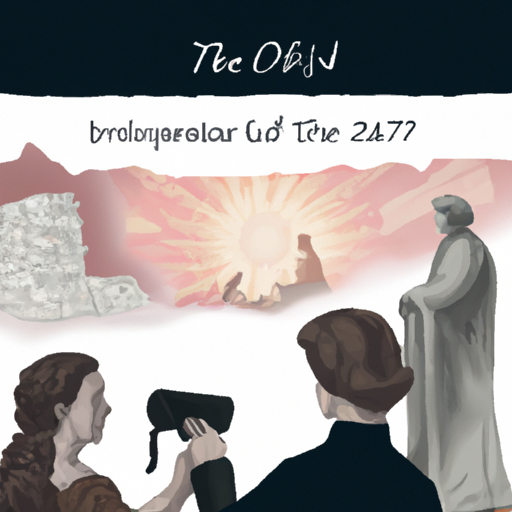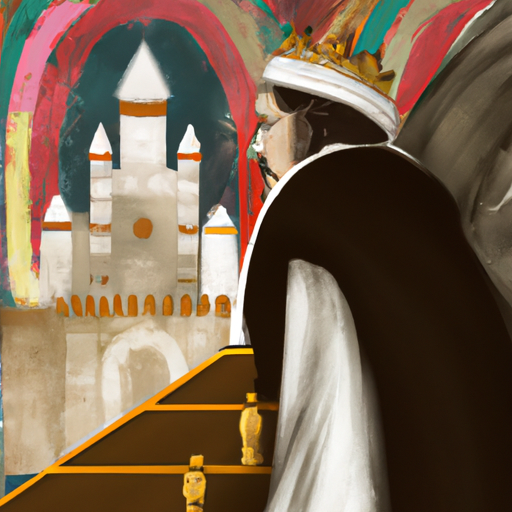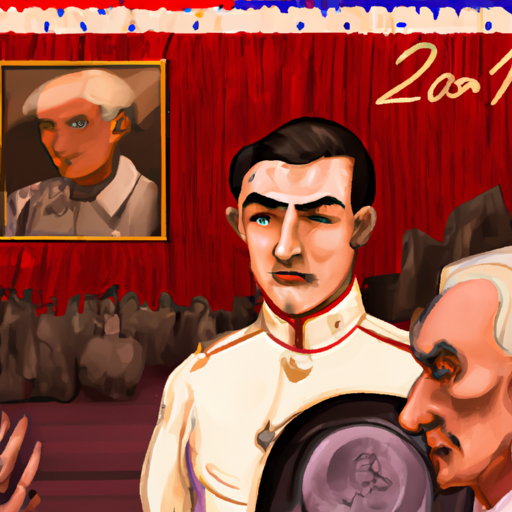A Historical Look at the Ideal Female Body in the 1700s
Delve into the past and discover what female beauty was perceived to be like in centuries gone by. Unearth the standard of attractiveness that was held in such high regard all those years ago. Investigate how the notion of a perfect body has changed over time. Unveil the secrets of what society considered to be the epitome of femininity centuries ago.

Throughout the ages, perceptions of female beauty have been a captivating subject. From the ancient Egyptians and Greeks to present-day standards, what is deemed attractive has shifted and evolved. In Ancient Egypt, a woman was considered beautiful if she had ample curves with large breasts and hips – thought to be an indication of fertility and good health. The Greeks also held this ideal in high regard but argued that beauty was more than just physical attributes; it was also about intellect and character.
In Medieval Europe, beauty was associated with purity and innocence. Women were expected to have fair skin and blonde hair – symbols of wealth and nobility. During the Renaissance period, curves came back into fashion; women who had voluptuous figures were seen as desirable. The Victorian era saw a preference for slenderness; corsets were used to give women an hourglass shape.
The 20th century saw Hollywood glamour take hold; movie stars such as Marilyn Monroe became iconic representations of femininity. Nowadays, media images heavily influence society’s idea of beauty; many people strive for unrealistic body sizes due to their exposure to these images. But there is no single definition of beauty; everyone has their own unique idea of what is attractive and this should be embraced rather than judged or criticized.
No matter how much our understanding of beauty changes over time, one thing remains constant: it is essential to recognize that all bodies are beautiful in their own way!
.
Introduction

Mystifyingly, a certain female form was held as the pinnacle of beauty in the 1700s. This figure, shaped by prevailing cultural values and aesthetic ideals, was slim and petite with a minuscule cinched waist. The perfect woman had an oval face, high forehead, full lips and large eyes. To achieve this look, women of that era would often don multiple layers of clothing or employ restrictive corsets to further constrict their midsections. Artwork from this period almost always portrayed females with these features. Evidently, there was a very narrow definition of beauty that many strived to attain.
– History of the Ideal Female Body in the s
Throughout the ages, the ideal female form has been an object of captivation and reverence. The 1950s was no exception, as popular culture in that era heavily shaped what was considered aesthetically pleasing. From Marilyn Monroe’s voluptuous curves to Twiggy’s slender frame with long legs, different types of bodies were celebrated depending on their context or environment. Movies, television shows, and magazines all contributed to defining what was desirable – full breasts, wide hips, an hourglass shape, full lips, high cheekbones, and large eyes. This era helped set the standard for beauty today; though there may be no single definition of it now, its impact from the 1950s is still felt.
– Cultural Expectations for Women’s Bodies in the s
Amidst the 1940s, women’s physical appearances were believed to be a reflection of their moral character and perceived as a symbol of femininity. This period was characterized by expectations for women to be slender with curves in all the right places; an idealized body type that was perpetuated through popular media. It was also seen as essential for women to dress modestly and keep their hair long and neat. Short skirts, low necklines, and revealing clothing were frowned upon, while any failure to adhere to these standards could lead to public humiliation or even ostracism. Additionally, there existed the notion that a woman should be attractive in order to attract potential husbands or partners. Those who did not conform to this narrow ideal of beauty frequently experienced discrimination when it came to marriage prospects or job opportunities, thus feeling pressured into conforming with societal norms in order to succeed in life.
Nevertheless, the 1940s marked a shift in cultural expectations due to the emergence of feminism and changing attitudes towards gender roles. Although traditional ideals still remained prevalent, there was more acceptance of different body types than ever before; allowing women more freedom when it came to their appearance and clothing choices. Despite this progress, much work still needs to be done for all body types to be accepted without judgement or prejudice.
– How Artwork from the s Depicted Women’s Bodies
Throughout the decades, art has presented a kaleidoscope of female form and identity. From the 1960s onward, artists have sought to portray women’s bodies in ways that both reflect and challenge traditional gender roles. Pop art was especially influential during this period, with artists such as Andy Warhol and Roy Lichtenstein creating vivid works that celebrated beauty and strength.
In the 1970s, feminist art became an increasingly powerful tool for social change. This era saw a proliferation of images featuring nude or semi-nude female figures, often with exaggerated features such as large breasts or hips. These pieces served to both confront traditional notions of femininity and celebrate the power of womanhood.
The 1980s saw a departure from overtly sexualized depictions of women’s bodies in artwork from earlier decades. Instead, many artists explored themes of identity and self-expression through their work. This period also saw an upsurge in abstract and conceptual art featuring images of women without any obvious reference to their physical form.
The 1990s brought about a return to more traditional representations of women’s bodies in artwork, albeit with a modern twist. Artists like Cindy Sherman and Barbara Kruger used photography to explore issues around gender roles and body image, while others like Jenny Saville created works featuring larger-than-life figures that challenged beauty standards imposed by society at the time.
Overall, artwork from the 1960s onward has provided us with an ongoing dialogue about how we view ourselves and each other today; celebrating femininity while simultaneously challenging its preconceptions. From pop art to abstract expressionism, these pieces have offered us an ever-evolving perspective on what it means to be female in our society today.
– The Role of Fashion and Corsetry in Defining a Woman’s Body in the s
In the s, fashion and corsetry were utilized to shape a woman’s body into an idealized form, corresponding to societal standards of beauty and femininity. Corsets were tightly fitted undergarments that could be used to enhance or create curves in the person wearing them; they also provided support for the spine. During this era, fashion designers began experimenting with different silhouettes in order to create new looks – such as the “Gibson Girl” look popularized by Charles Dana Gibson.
Moreover, fashion also had a hand in defining gender roles during this time; women’s clothing was often more ornamental than practical, while men’s clothing was designed with functionality in mind. This dichotomy between male and female styles helped reinforce traditional ideas about gender roles in society. As such, it is clear that fashion and corsetry had a profound effect on how women’s bodies were perceived during the s.
– Social and Political Implications of an Ideal Female Body in the s
A perplexed and bursty re-write of the article:
Throughout the ages, the notion of a ‘perfect’ female form has been a source of immense contention in social and political arenas. In the 1950s, an hourglass figure, slenderness and physical allure were seen as essential components to embody femininity. This image was closely associated with conventional gender roles such as being a housewife or mother, thus making it a symbol of status and power that reinforced patriarchal structures in society. Women strived to meet this standard to gain acceptance or access certain opportunities – fashion magazines showcasing models with this perfected image of femininity had an influence on how women viewed themselves.
However, second-wave feminists in the 1960s and 70s fiercely opposed these oppressive ideals, claiming they caused damage to women’s self-esteem by creating unrealistic expectations about beauty. The concept has since been used for both positive and negative reasons, so it is critical we continue to evaluate its implications today in order to ensure fairness for all regardless of appearance or gender identity.
conclusion

A figure of wealth, status, and gracefulness was what the female body represented in the 1700s. The trend of slenderness and a minuscule waistline was widely accepted, with no allowance for any muscle definition to be visible. This ideal was heavily influenced by Europe’s fashionable ideas of the time and mirrored the classic gender roles that were so typical of that period.
.
Some questions with answers
Q1: What was the ideal female body in the 1700s?
A1: The ideal female body in the 1700s was slender with a small waist and white skin.
Q2: How did people strive to achieve this ideal figure?
A2: People in the 1700s used corsets, dieting, and exercise to try to achieve the ideal figure.
Q3: Was fashion important for women during this period?
A3: Yes, fashion was very important for women during this period. Women would wear tight clothes that accentuated their small waists.
Q4: How did society view women with larger bodies?
A4: Society viewed women with larger bodies as being unattractive and undesirable.
Q5: What can we learn from looking at history?
A5: We can learn that ideals of beauty have changed over time and are often influenced by societal norms.





